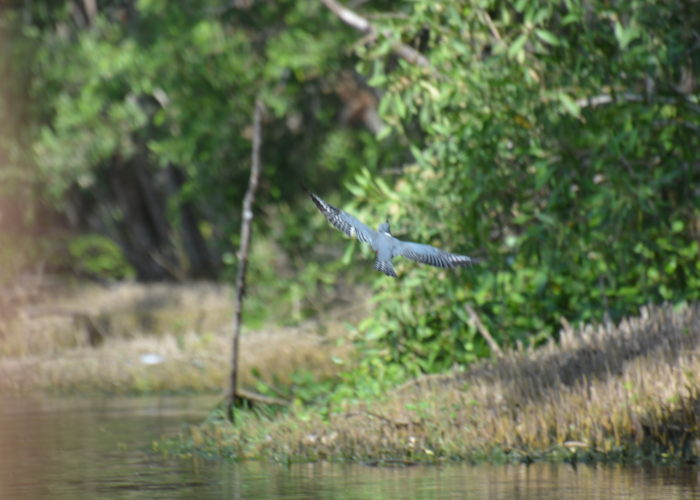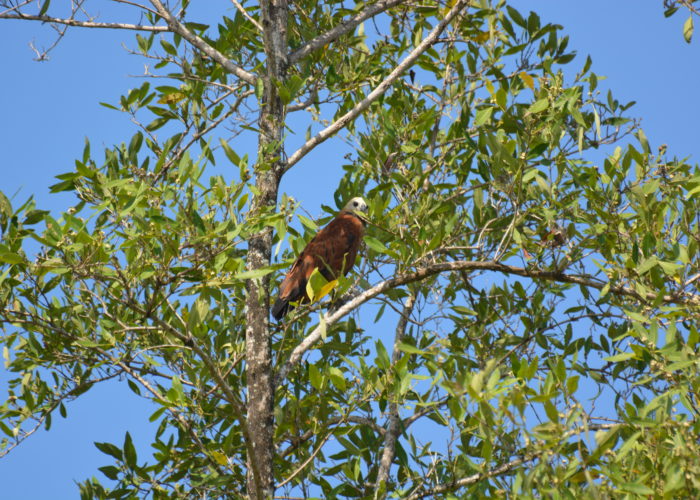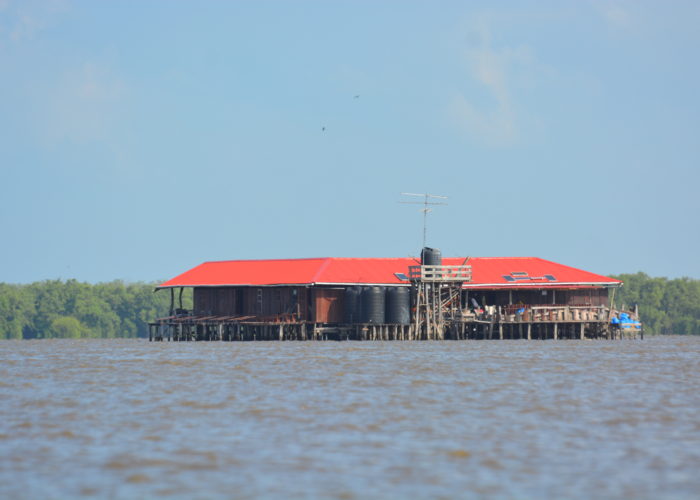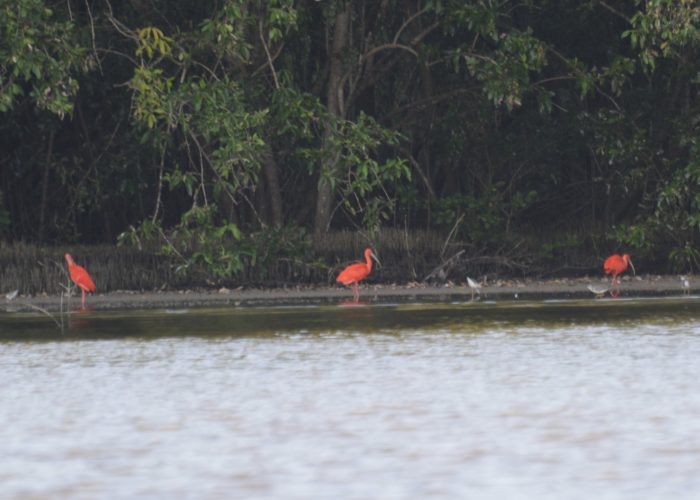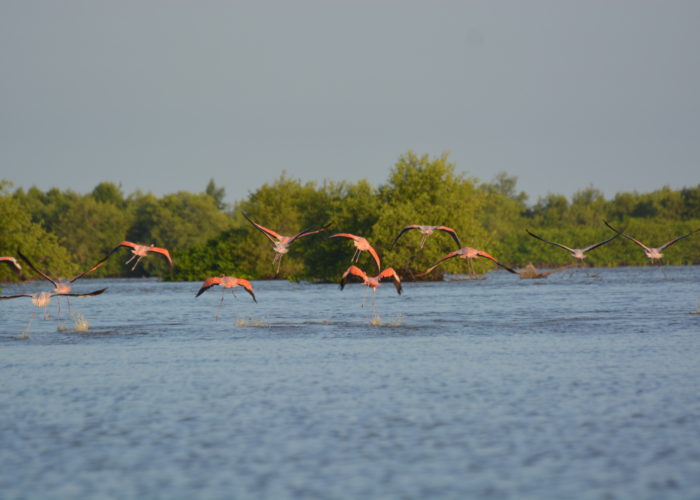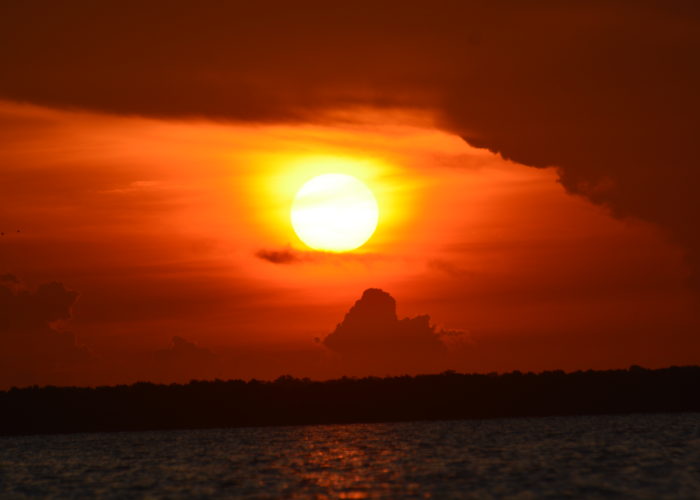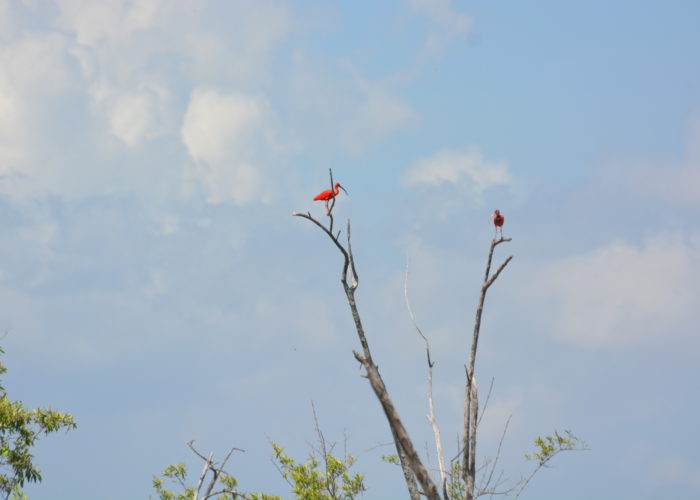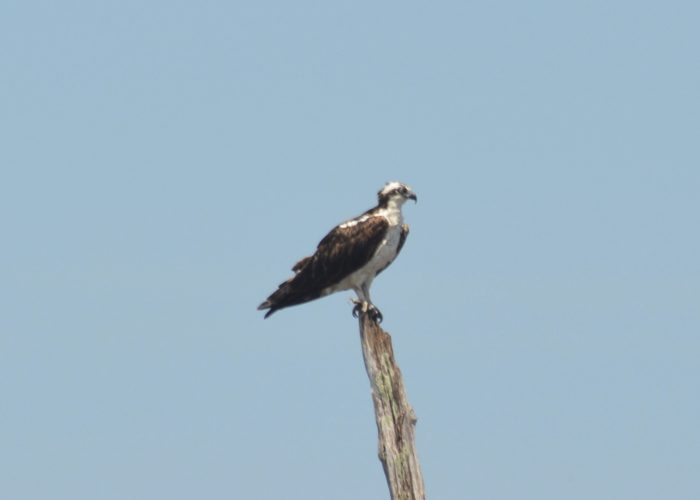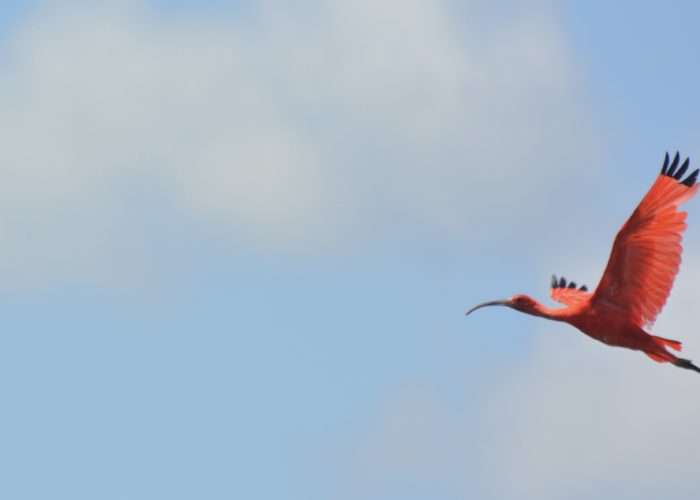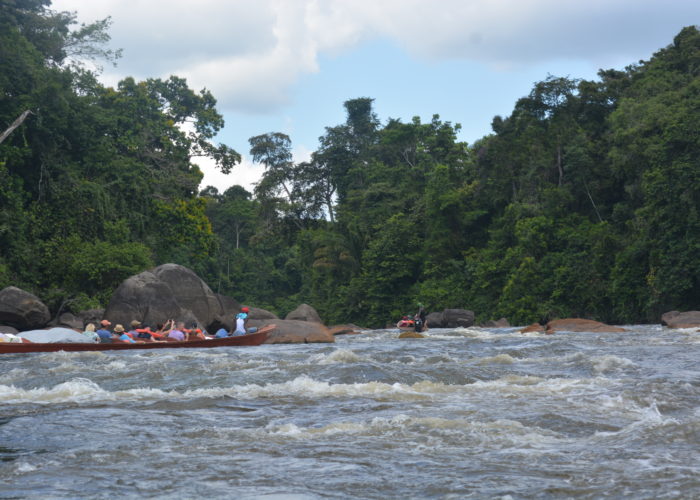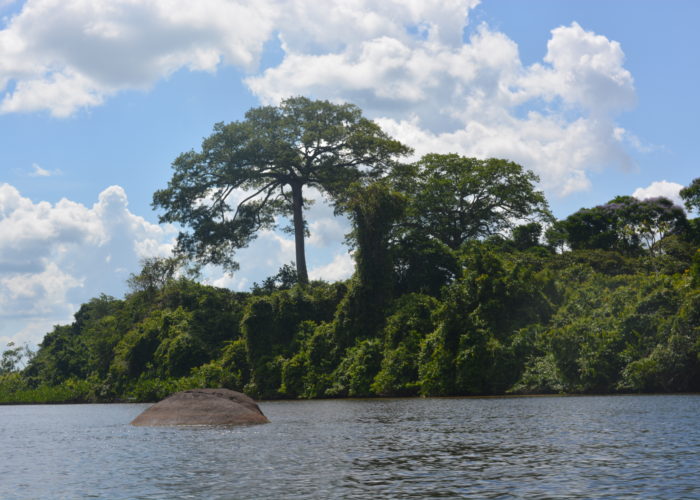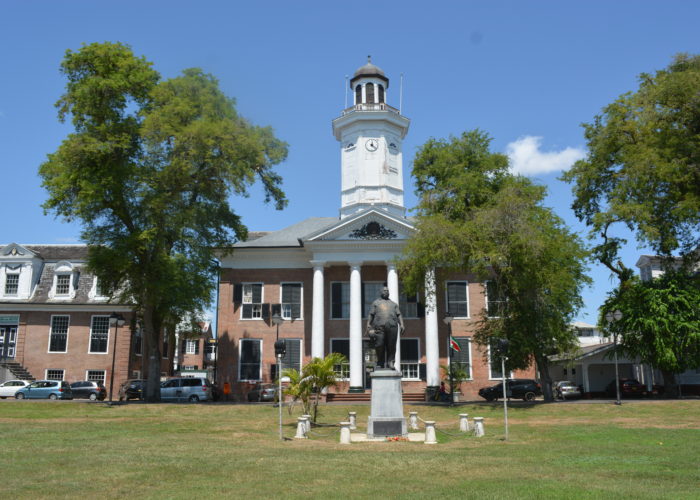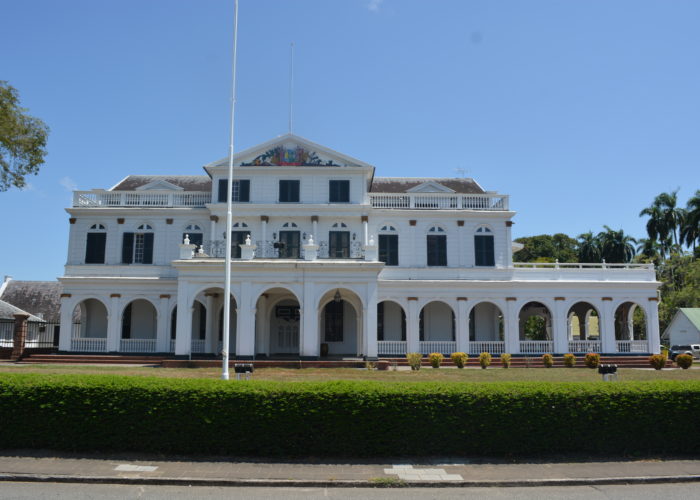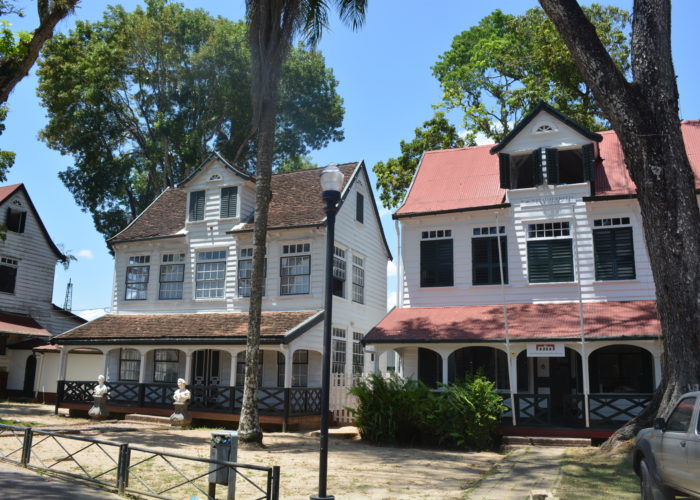We crossed the 5kms over the Couratyne River to Suriname on an old ferry, which only operates once a day. Entering into Suriname we had to purchase a tourist card for EUR35, the first visa on our journey that we had to pay for, unlike our Australian and American colleagues who have to pay a reciprocity fee in pretty much every South American country. Unfortunately we had to leave one of our Irish passengers at the border as for some reason they too need a visa.
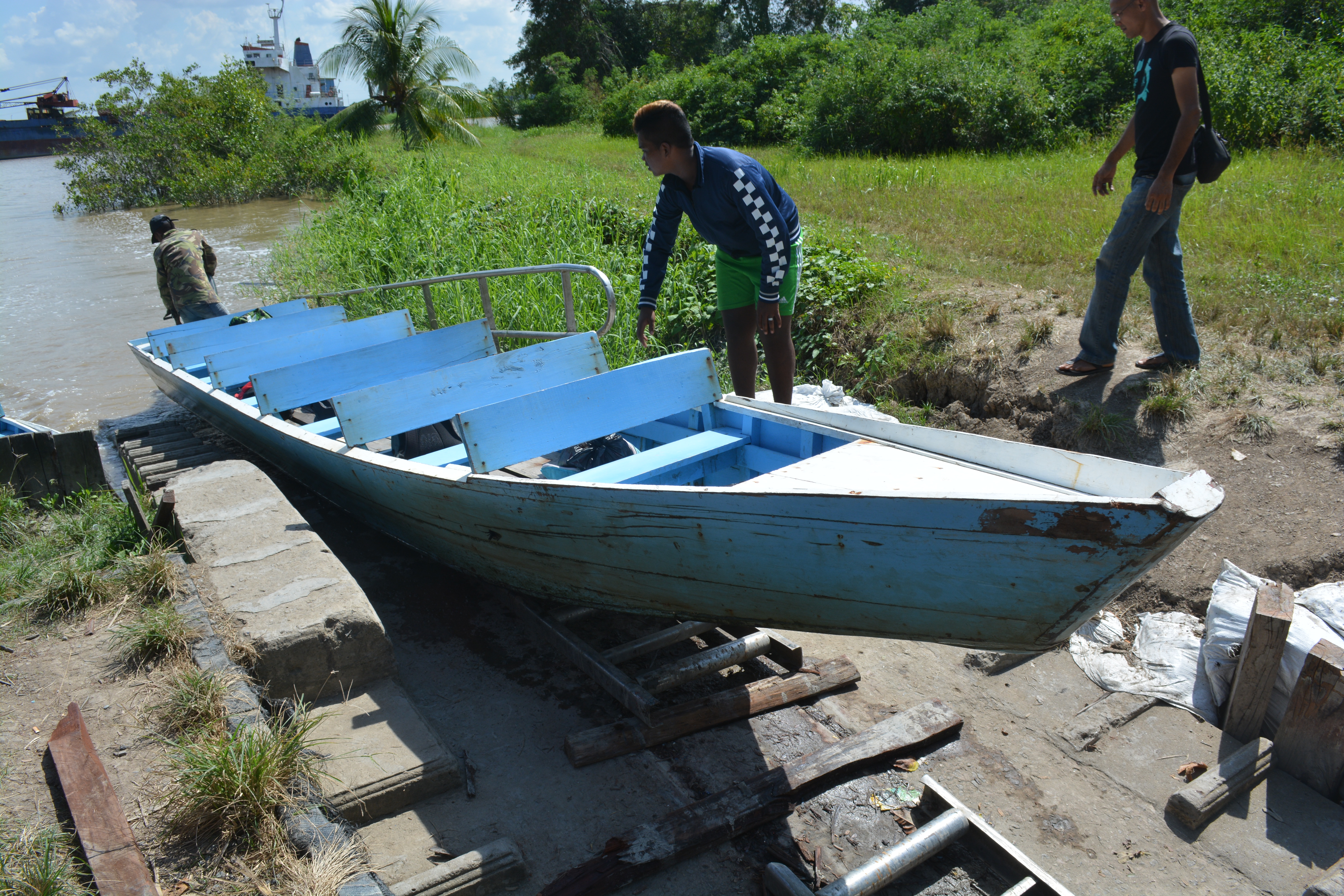
Our first destination in Suriname was the town of Niewe Nickerie a modern town that supports the surrounding agricultural industry, particularly rice and sugar cane. The town has many Dutch characteristics including Dutch sign, which makes quite a contrast to all the places we have been before in South America. Also in typical Dutch style much of the land has been reclaimed from the sea and swamps, through a collection of canals and dykes that could almost be a tropical version of the polders in the Netherlands.
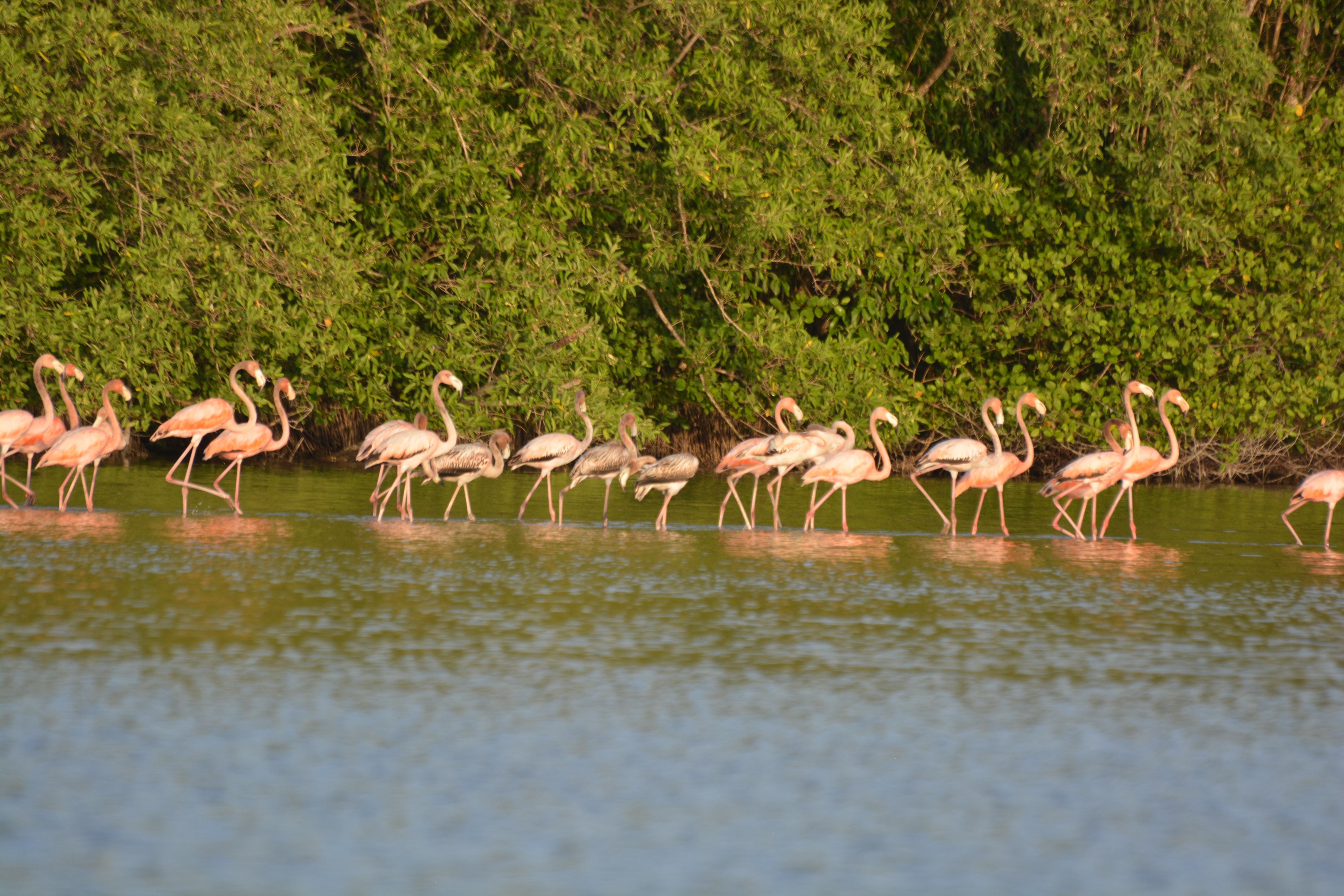
The language is an unusual hybrid of local dialects with the addition of many imported words from either Dutch or English where they do not exist. In addition Dutch is the official language of government and business. Much of the food has a large Indonesian influence and a subtle combination of spices, while most of the commercial activity particularly the shops are run by either the Chinese or Indians. The Chinese are also strongly in evidence in exploiting Suriname’s natural resources, especially hard wood and minerals. The local television imports much of its programming from the Netherlands, including the evening news which they time delay and broadcast. A large proportion of Suriname’s population that have family ties and connections with the Netherlands. Indeed a number of the famous Dutch footballers of recent years had their ancestral roots in Suriname.

From Niewe Nickerie we took a small boat through the canals to the open water at Bigi Pans where there are a small number of wooden houses built on stilts in the middle of the lake. The whole area is below sea level and is a haven for water birds. In particular the rare red ibis is found here. These birds are bright scarlet red and really stand out contrast to the verdant green vegetation and the blue waters. Also present are the Amazon kingfishers and pink flamingos, but these colourful birds take second place to the scarlet ibises. There are many other birds and reptiles including caimans and many snakes – our guides managed to locate and pick up a metre long boa constrictor on a night safari. The lake is full of fish, including many that jump out of the water, one of which landed in our boat so ended up on the dinner table of one of our guides.
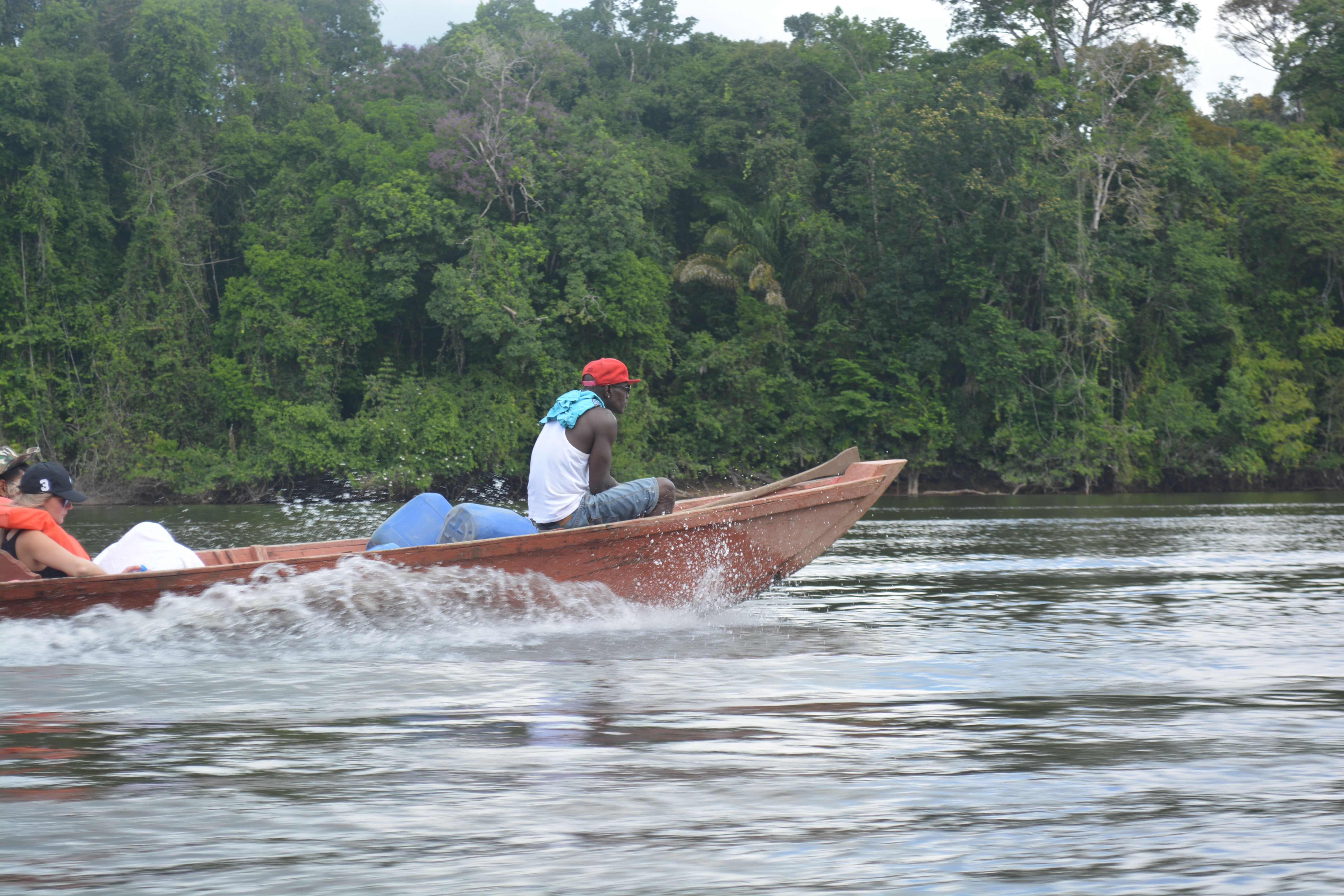
Leaving Niewe Nickerie we followed the coast road to Paramaribo for a short stop before heading inland to the jungle at Anaula. There we spent two days in a well appointed lodge alongside the Suriname River. The river flows through some beautiful and largely unspoilt jungle and is a most peaceful place. The river flows through a number of rapids and has a number of communities living on its banks. Like the Amazon the river acts as the main transport artery for all the local communities. The surrounding jungle contains the full range of South American wildlife.

On the road inland there is a lot of evidence of mining and logging. As in much of South America the Chinese are very prominent in these resource extractive industries. The local gold mining does leave a large scar on the landscape, especially the mercury they use in their processes, which often leeches into the local waterways and permanently damages the rivers it comes in contact with.
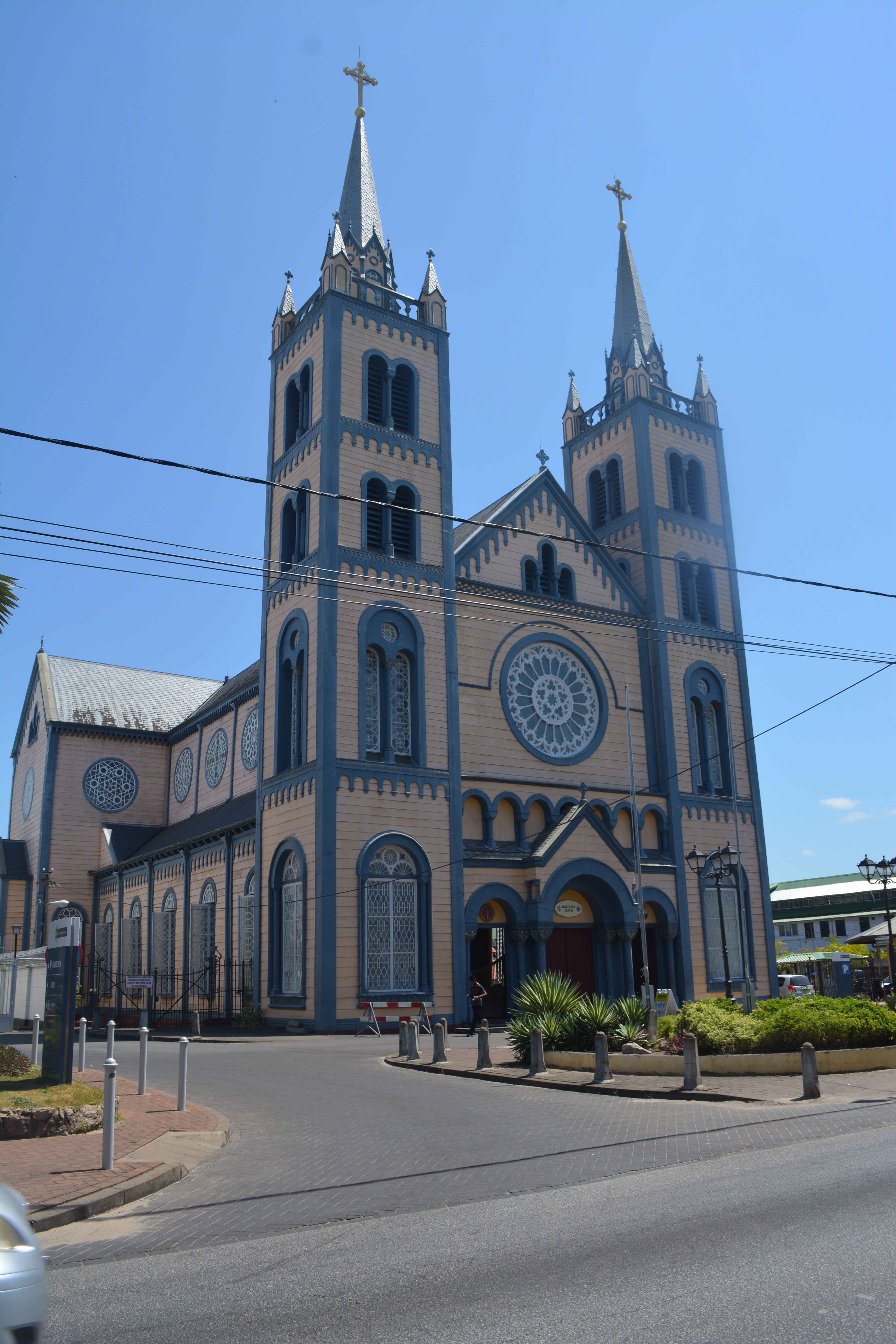 Back in Paramaribo for our final couple of days in Suriname, Paramaribo is a UNESCO World Heritage Site because its many old wooden colonial buildings have been unaltered for a number of years and is a fusion of Dutch building techniques with Caribbean and South American materials. Many of the buildings are in need of serious renovation like those in Georgetown but the funds required to do this are sadly not available in either country. Most of the buildings are white and contain lovely wooden balconies. Probably the most impressive building is the Saint Peter and Paul Cathedral which is built entirely of wood, and has been beautifully restored with the interior wood containing a lovely polish which together with the open windows makes for a very peaceful spot. The presidential palace is an elegant building with a large drive and balconies and verandas on its perimeter and again is in beautiful condition. Many of the other government and commercial buildings, however are in much less good condition and in need of a new coat of paint and in many instances more fundamental restoration.
Back in Paramaribo for our final couple of days in Suriname, Paramaribo is a UNESCO World Heritage Site because its many old wooden colonial buildings have been unaltered for a number of years and is a fusion of Dutch building techniques with Caribbean and South American materials. Many of the buildings are in need of serious renovation like those in Georgetown but the funds required to do this are sadly not available in either country. Most of the buildings are white and contain lovely wooden balconies. Probably the most impressive building is the Saint Peter and Paul Cathedral which is built entirely of wood, and has been beautifully restored with the interior wood containing a lovely polish which together with the open windows makes for a very peaceful spot. The presidential palace is an elegant building with a large drive and balconies and verandas on its perimeter and again is in beautiful condition. Many of the other government and commercial buildings, however are in much less good condition and in need of a new coat of paint and in many instances more fundamental restoration.

The market on the riverfront was full of life and had some very interesting looking smoked fish. It sold pretty much everything from food to clothing and household items. The principal market traders were mostly of Indian descent and in addition to food there is a huge trade in clothing.
Date: 05/10/2018 to 12/10/2018

